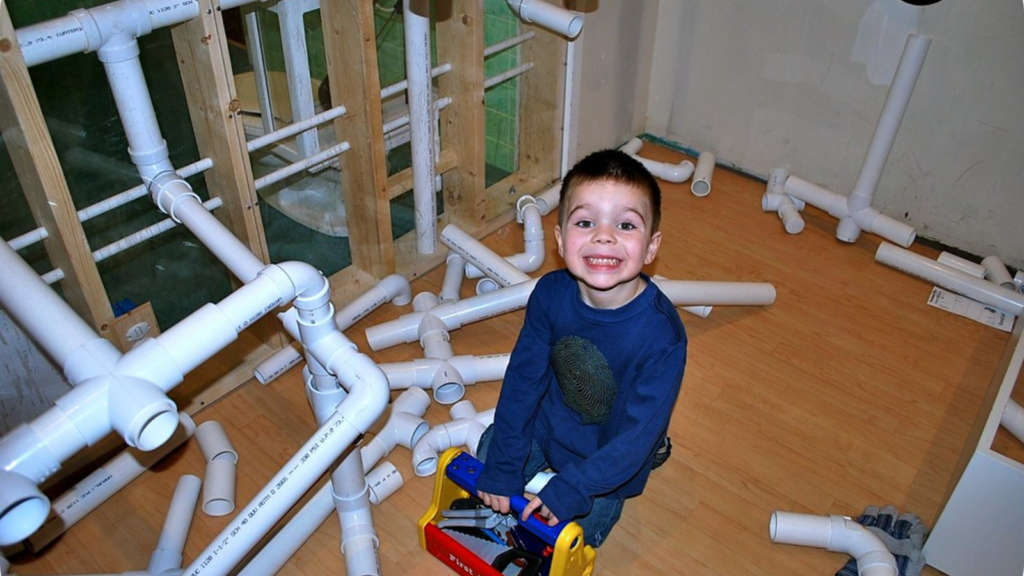Imagine a world where a cardboard box becomes a spaceship, a stuffed animal turns into a brave hero, and the living room rug transforms into a vast ocean. Welcome to the magical realm of toddler pretend play. It’s a place where creativity has no bounds and every day objects become tools for extraordinary adventures.
Pretend play isn’t just about having fun, it’s a vital part of a toddler’s development. It’s where they learn to problem-solve, express their feelings, and understand the world around them. So, let’s dive into the fascinating world of pretend play and discover how it shapes the minds of our little ones.
Toddler Pretend Play
Toddler pretend play represents a dynamic, vital part of early childhood development, suffused with elements vital for cognitive growth and emotional intelligence.  Deconstructing this multifaceted activity reveals two crucial components: toys and props, and the participation of caregivers.
Deconstructing this multifaceted activity reveals two crucial components: toys and props, and the participation of caregivers.
Essential Toys and Props
Toys and props serve as catalysts for toddler’s pretend play, utilizing everyday objects to transform a mundane environment into a stage for their imagination. For instance, a mere wooden spoon becomes a microphone, enabling vocal exploration. Toy animals and dolls often act as companions, facilitating social scenarios.
The Role of Caregivers in Pretend Play
Coming from a position of support, caregivers hold a key role in toddler pretend play. While granting autonomy and freedom for self-direction, caregivers act as co-players and facilitators. They engage in conversations during play, sparking vocabulary expansion and communication improvements. They also help introduce new themes in play, pushing boundaries and guiding cognitive expansion.
How to Nurture Pretend Play in Toddlers
Encouraging Independence and Creativity
Nurturing pretend play in toddlers requires a balance between providing guidance and allowing independence. When guiding toddlers during pretend play, caregivers can highlight opportunities for them to solve problems, make choices, and interact with their environment, thereby fostering creativity and independence.
Setting Up a Conducive Environment
The environment is a pivotal factor in nurturing toddler pretend play. Caregivers can establish a pretend play-friendly environment by including props that inspire imaginative scenarios. These props could include everyday objects or toddler-friendly toys, opening up a realm of possible imaginative scenarios. For instance, having a toy kitchen set can encourage a child to enact cooking scenarios, while dress-up costumes might inspire role-playing activities.
Common Challenges in Toddler Pretend Play
Pretend play in toddlers sometimes involves dealing with common challenges that can influence the play quality significantly. These could range from limited attention spans, to frustration and sharing issues during interactions. Understanding each of these issues and finding suitable strategies to deal with them, amplifies the beneficial elements of pretend play for toddlers.
Overcoming Limited Attention Spans
Toddlers’ attention spans typically vary, presenting challenges in sustaining long pretend play sessions. Yet, enhancing these sessions involves using engaging props and narratives. Experts suggest incorporating the child’s clear interests into the play narrative to pique their curiosity. For example, if a toddler shows interest in animals, incorporating animal-themed props might increase their engagement.
Switching between activities also maintains their interest. For instance, the child could start by pretend feeding a toy animal, then shift to arranging a pretend animal shelter. This alternating setup, while maintaining the continuity of pretend play, can hold their attention for longer periods.
Dealing with Frustration and Sharing Issues
Toddler pretend play often involves group interactions, which may give rise to feelings of frustration or sharing issues. Addressing these concerns involves suggesting turn-taking games or parallel play, where children play the same game but without any direct interaction. Both methods foster a sense of sharing without introducing a frustrating competitive element.
Remember, it’s natural for toddlers to exhibit these behaviors and mastering social skills is a gradual process. These strategies not only ensure smoother pretend play sessions but also contribute to toddlers’ emotional intelligence and social development.
Need to Know
Embracing pretend play is a smart move for parents and caregivers looking to aid toddlers’ development. It’s a fun way to help little ones build vital cognitive, emotional, and language skills. Active involvement in a child’s pretend play can make a world of difference, turning challenges into opportunities for growth.
